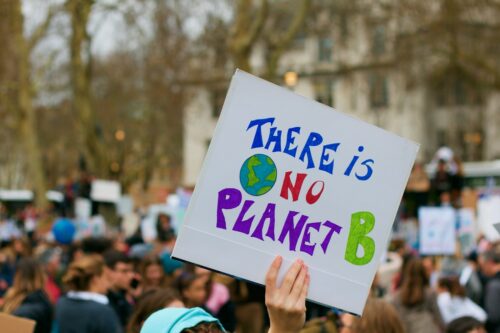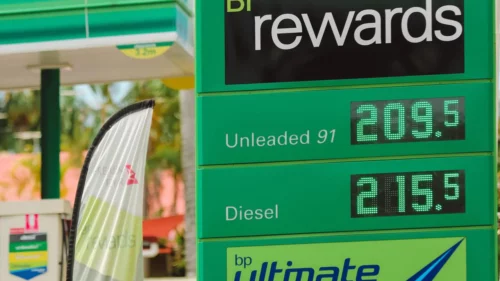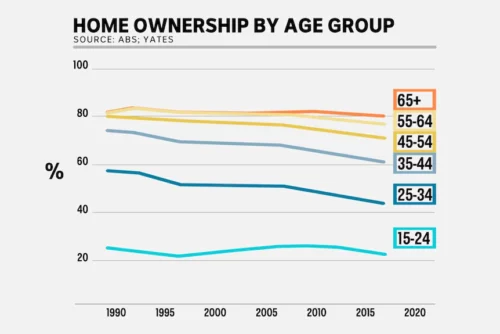

As the 2022 Federal Election draws near, it’s important to review the policies of the major parties in order to make an informed decision at the polls. For many Australians, the two most crucial and imminent issues will be the cost of living and climate change1. This article will present an overview of the policy positions of the major political parties with the aim of informing the readership ahead of the 2022 Federal Election.
Beginning with the cost of living, the 14-year high inflation rate of 4.5% p.a. poses as one of the main issues that is sure to test the 2022 Federal Election campaign2. The main driving forces behind the reignition of the cost of living debate include both, the Covid-19 pandemic induced global supply chain disruptions and the soaring cost of petrol and household goods.
The second major issue at the forefront of this election campaign is climate change policy. Environmental issues have gained prominence within public policy discourse after a political term marked by continuous climate change-related disaster, led by the Morrison government, has caused growing public discontent to this perceived government failing. Unsurprisingly, so far in the election campaign, the response to public concerns regarding environmental degradation have been weak. Former Australian threatened species commissioner, Gregory Andrews, disapprovingly remarked, “biodiversity and nature have been completely absent from this campaign so far”3. The silence from the major parties is especially worrying following the IPCC’s recent landmark report on climate change and its warning of a ‘code red for humanity’ as United Nations Chief, Antonio Guterres stated4.
Unfortunately, these warnings seem to be falling on deaf ears; and voters have noticed. After years of fires, droughts and floods ravaging the country, it comes as no surprise that even in Liberal and National-held seats, the environment has now been ranked above the cost of living with regard to what voters are most concerned about5. These changing priorities for voters have major implications for the coalition’s re-election prospects considering the government’s decade of inaction on climate change and the Prime Minister’s absence during the 2020 bushfire crisis.
The remainder of this article will be dedicated to a high-level policy overview of the major parties with special attention given to the two main policy areas – the cost of living and the environment, that Australians have ranked as the most crucial policy points in this election.

Source: The Australian.
The Australian Labor Party, headed by Opposition Leader Anthony Albanese and the Australian Greens, headed by Adam Bandt, are two ‘left-leaning’ parties that make up two-thirds of the three biggest political parties in Australia via vote. With that being said, the two parties are very much separate (no formal party alliance, akin to the Coalition), with both having vastly different views on various issues and topics that affect Australians and international citizens that call Australia home.
Realistically in this election, only Labor has any opportunity to win the election and overtake the Liberal-National Coalition. With that being said, the Greens wish to increase their presence at the Federal level, targeting many electorates with the generally younger and more progressive voters, such as Macnamara in Victoria6.
A key topic for debate for the parties is the current cost of living7. The Consumer Price Index, a measure of inflation with relation to consumer spending on general goods and services (e.g. bread, milk, butter etc.), had sharply increased towards the end of 2021, with current levels being higher than pre-pandemic times8. Other items, such as house prices have seen an increase as well, with some homes being simply out of reach for many Australians and prospective citizens. Labor addresses the latter with the “Housing Australia Future Fund”, a $10 billion investment into affordable and social housing over the next 5 years after its implementation9. Labor claims that this fund will create both jobs and promote equity in housing; at least 4000 homes will be dedicated for women and children either fleeing from violence or at risk of being homeless10. With that being said, an issue with this fund is that it is debt financed: Labor intends to borrow the $10 billion at a low interest rate, and invest it in high-return investments, very much similar to Australia’s Future Fund, the sovereign fund for Australia. While such investments and debt-financed policies have succeeded in the past11, they will always carry risk and may fail to reach expected goals and potentially slow the process of building more social housing. This fund is half of what the Grattan Institute recommended back in November 2021, not “going all out” to promote affordable and social housing may be detrimental for some voters12.
The Greens solution to the higher cost of living can be surmised with one word: tax. Many policies that the Greens propose will be funded by the “billionaires tax” and the “corporate super-profits tax”13. For example, the Greens want to increase income support (JobKeeper/Seeker etc.) in an effort to stop poverty amongst Australians. According to this policy, individuals on youth allowance (specifically a 21-year old single with no dependents) may have their allowance increased by up to $347 a week with this policy14. In a nutshell: to curb inflation and its negative effects, the Greens intend to lift the standard of living in Australia by taxing the mega-rich.
Another important topic, especially amongst younger generations15, is climate change. A common figure to reference for climate change is “net zero emissions” by some year. The Greens, perhaps as expected, want net zero before 203516. This means ceasing the creation of new non-renewable energy projects sources like coal and gas as soon as practically possible, and transitioning to renewable energy sources as well as researching the latest technologies to increase energy efficiency from said sources. All of this will be mostly funded by the aforementioned billionaires tax and its related derivatives. As mentioned prior, the Greens may never be able to implement such changes, but their presence and the opportunity to hear from a third party is incredibly important to avoid a completely binary political system and allow an expression for those not interested in any of the two major party factions.

Source: Medium.
Labor has promised to cut emissions by 43% by 203017. Whilst not as ambitious as the Greens, they instead focus on the potential jobs this move towards greener energy will create along with the savings from electricity these new energies have the potential to create. According to Labor, there will be more than 600,000 jobs created throughout this process by 2030. However, the elusive net zero emissions target is in 2050, in line with the current Government’s projections and policies. From here, only time will tell if Labor, if elected, will keep their promises and goals steady.
The Liberal and National Party currently hold government as a coalition. The coalition is headed by Prime Minister Scott Morrison (Liberal Party) and Deputy Prime Minister Barnaby Joyce (National Party). Both parties hold similar interests and stances on political issues, and are ‘right-leaning’.
As the cost of living rises due to the pandemic, the global conflicts and extreme weather events, the Liberal–National Coalition plans to ease the pressure by providing immediate financial relief, lowering taxes, and supporting first home buyers. To immediately reduce cost of living pressures for Australians, the Liberal–National Coalition is reducing the cost of fuel by 22 cents per litre for the next six months. This was achieved by reducing the money consumers pay directly to the government at the fuel pump by 50% – from 44.2 cents per litre to 22.1 cents18.

Source: The Australian.
The Federal Government has also provided Australians with a one-off $420 cost of living tax offset to more than 10 million low and middle income earners19, alongside a one-off cost of living payment for more than 6 million Australians20. Additional tax relief will also be provided to more than 12 million taxpayers in 2022 and 2023, worth up to $2,565 for individuals and $5,130 for couples21. As the last stage of a plan to reshape Australia’s tax bracket system, the marginal tax rate of 32.5 per cent tax rate will be cut to 30 per cent, with the upper threshold of the tax bracket raised from $120,000 to $200,000, mainly benefiting high income earners22.
To support first home buyers, single parents, and regional Australians to achieve home ownership, the Coalition is expanding a scheme that enables them to purchase with a smaller deposit. 35,000 places for the First Home Guarantee and 10,000 places for the Regional Home Guarantee will be available, which means that first home buyers and regional Australians can purchase a home with a 5 percent deposit23. Single parents will be able to purchase a home with a deposit of 2 percent with the Family Home Guarantee, which has been expanded to 5,000 places per year24.

Source: The ABC.
Whilst these policies have aided Australians to combat the implications of the rising cost of living in recent months, there is hesitancy that these policies are ‘short-term’ and are ‘election-specific’ policies. Only time will tell if the Liberal–National Coalition will continue to support the average Australian and address the rising cost of living by implementing long-term policies.
In response to the challenges of climate change, the Liberal–National Coalition seeks to reduce emissions, invest in renewable energy, and improve the waste and recycling sector. With the Long Term Emissions Reduction Plan, net zero emissions are expected to be achieved by 2050. This target is planned to be met by investing $22 billion in low emission technologies, with a total of $88 billion invested in reducing emissions25. The renewable energy investment includes Snowy 2.0 and Tasmania’s Battery of the Nation Pumped Hydro. Pumped Hydro is the most common and mature form of energy storage that ensures the availability of energy regardless of the weather condition, which helps prevent blackouts and electricity price volatility26. Additionally, the Coalition Government’s green bank has recently reached $10 billion in lifetime investment, and this is planned to be used to support emission reduction and energy efficiency projects27. As for the waste and recycling industry, a $250 million Recycling Modernisation Fund is supporting the transformation of recycling infrastructure, and 87 new projects across the country are aiming to improve waste management by increasing recycling rates and halving food waste by 203028. However, it is important to note that the Liberal–National Coalition continues to support and back the mining and non-renewable energy sector.
With the federal election mere weeks away, the public has entered a highly consequential period of democratic deliberation. As voters, we decide who forms government, and consequently our direction as a country as well as our standing on the international stage for the next three years. Instead of focusing on election gaffes and ‘gotcha’ moments, the public’s attention should be on the policy ideas that might pave the way for positive change and face up to the significant social and economic challenges of the day. Ultimately, we require a parliament that will grapple with much needed national reforms.
The CAINZ Digest is published by CAINZ, a student society affiliated with the Faculty of Business at the University of Melbourne. Opinions published are not necessarily those of the publishers, printers or editors. CAINZ and the University of Melbourne do not accept any responsibility for the accuracy of information contained in the publication.